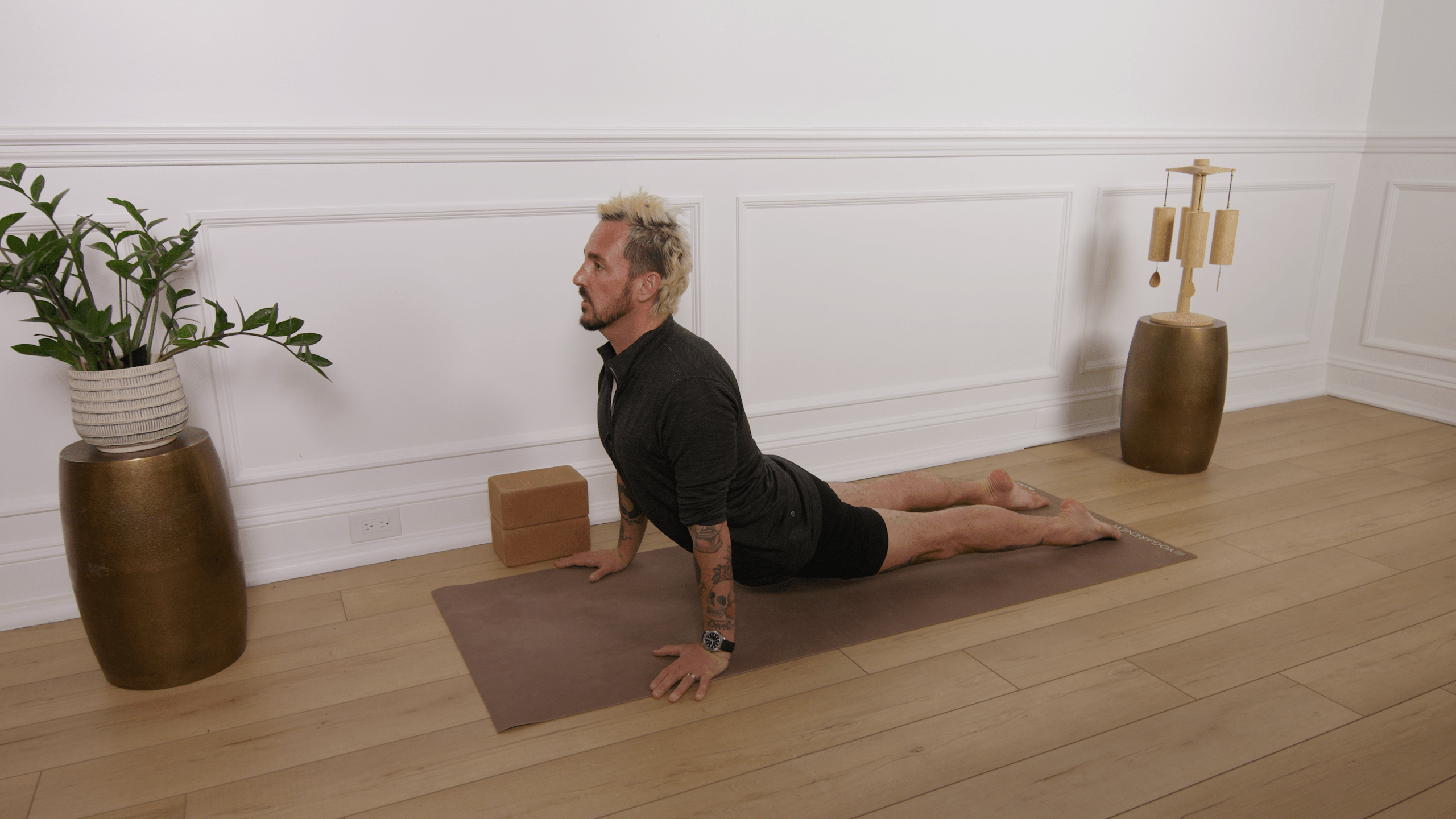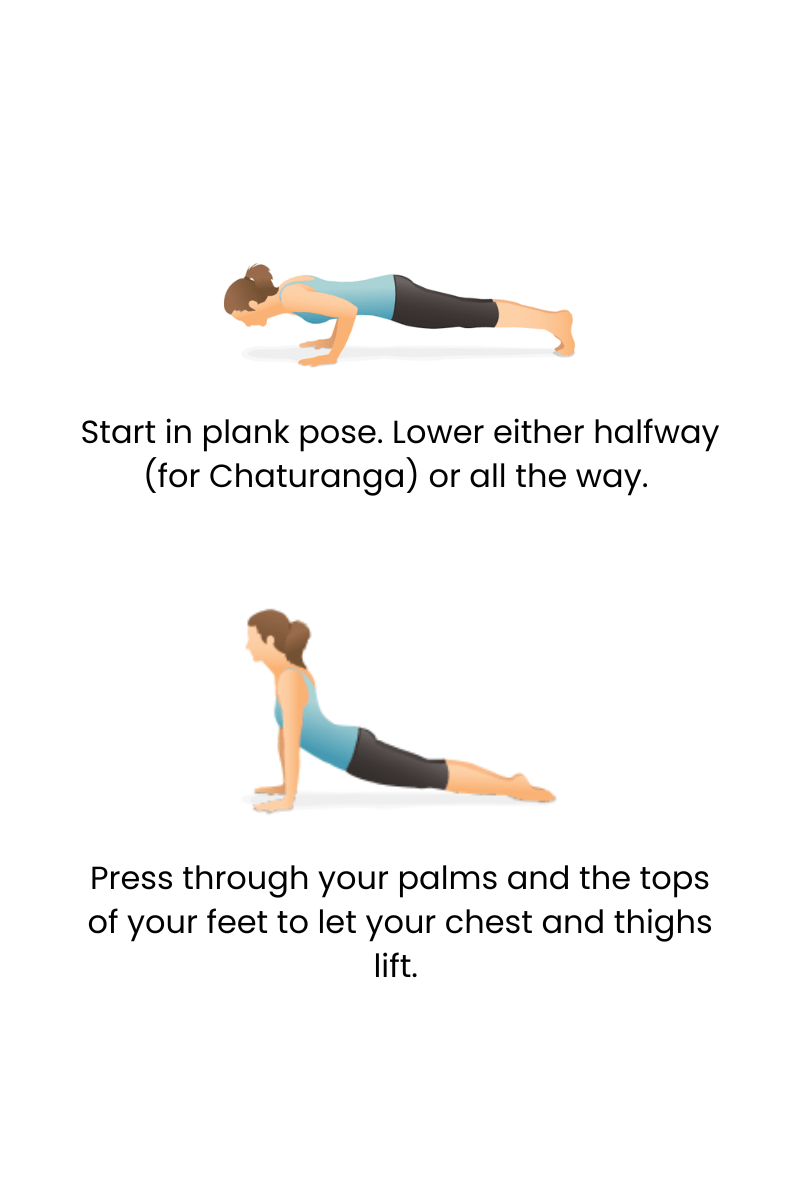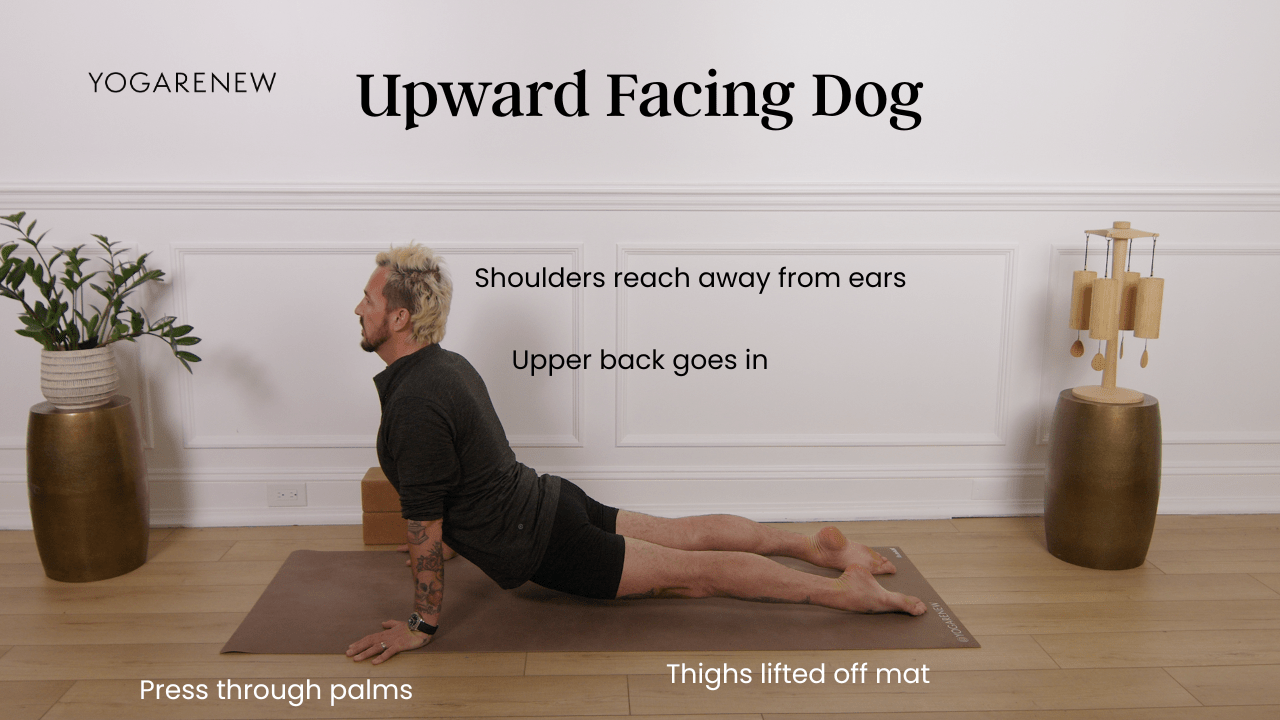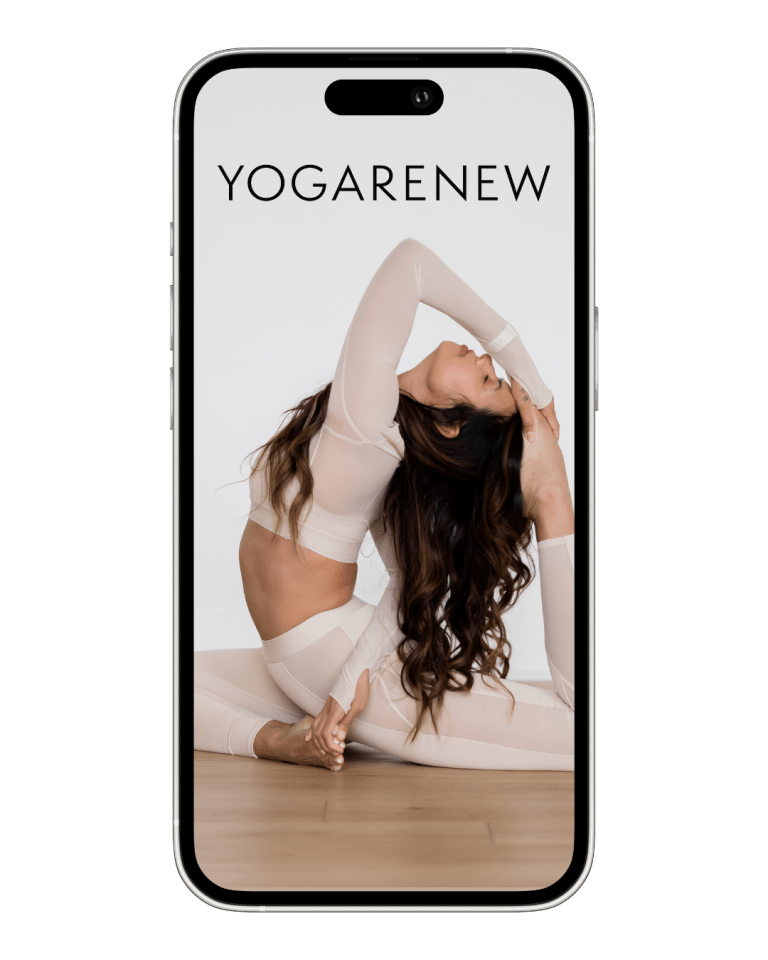What is Upward Facing Dog?
English Name: Upward-Facing Dog
Sanskrit Name: Urdhva Mukha Svanasana (pronounced OORD-vah MOO-kah shvah-NAH-suh-nuh)
Category: Backbend, Strength, Intermediate, Foundational

English Name: Upward-Facing Dog
Sanskrit Name: Urdhva Mukha Svanasana (pronounced OORD-vah MOO-kah shvah-NAH-suh-nuh)
Category: Backbend, Strength, Intermediate, Foundational
Upward-Facing Dog, or Urdhva Mukha Svanasana, is a foundational yoga backbend commonly found in Vinyasa and Power yoga sequences. It strengthens the arms, shoulders, and back while opening the chest and stretching the front body.
Typically linked with Chaturanga Dandasana and Downward-Facing Dog in Sun Salutations, this pose energizes the body and improves posture—when practiced with mindful alignment and core support.
Strengthens the Upper Body: Activates arms, shoulders, and back
Opens the Chest and Heart Space: Expands the front body
Improves Posture: Encourages spinal extension and alignment
Stretches the Hip Flexors & Abdomen: Lengthens the front of the body
Boosts Energy: Stimulates breath and circulation
Supports Backbend Development: Builds mobility in a controlled way
Begin lying face down, hands under shoulders, elbows hugging in.
Press into your palms, straighten your arms, and lift your torso and legs off the mat.
Roll the shoulders back and broaden across the collarbones.
Engage the quads and glutes to lift the thighs and knees.
Press the tops of your feet firmly into the floor.
Gaze slightly forward or up—avoid crunching the neck.
Keep elbows soft (not hyperextended) and ribs gently drawn in.
Hold for 3–5 breaths, then release to the mat or transition to Downward-Facing Dog.


Wrists under shoulders, fingers spread wide
Elbows straight but not locked
Press down through hands and tops of feet
Lift thighs and knees off the mat
Lengthen tailbone and lift through the sternum
Draw the belly in gently to support the low back
“Shine your heart forward while grounding your hands and feet.”
“Lift through the chest, not just the chin.”
“Press down to rise up—use the strength of your whole body.”
“Draw your shoulders back and down to open the front body.”
“Keep the legs active to support the spine.”
Wrist or Shoulder Injuries: May require modification or substitution
Low Back Pain or Compression: Use Cobra Pose instead or lift less deeply
Pregnancy (Second & Third Trimester): Avoid deep prone backbends
Neck Sensitivity: Keep the gaze forward instead of up
Herniated Disc or Sciatica: Consult a professional before practicing
Use a Block Under Hands: Raises torso to reduce intensity
Lower to Cobra Pose: Keep pelvis and legs on the mat for gentler backbend
Bend Elbows Slightly: Reduces strain in shoulders or wrists
Keep Gaze Forward: Protects the neck and encourages neutral spine
Engage Core More Deeply: If experiencing low back strain
One-Legged Upward Dog: Lift one leg to challenge balance and strength
Knees Down: Practice a hybrid between Cobra and Up Dog for beginners
Roll Through Vinyasa: Use it in dynamic transitions like Chaturanga to Downward Dog
Arm Rotation Focus: Externally rotate upper arms for shoulder stability
With Props: Use blocks or blanket under thighs to reduce pressure
Letting the Legs Rest on the Floor: Engage quads to lift the thighs
Overarching the Low Back: Lengthen the spine and engage the core
Shoulders Up by the Ears: Draw shoulder blades down the back
Hyperextending Elbows: Keep a micro-bend or soften the arms
Dumping into Wrists: Press evenly through the whole hand, especially the knuckles
Recent Surgery (spine, abdomen, wrists): Avoid or use Cobra Pose instead
Chronic Back Conditions: Practice with guidance and use gentler alternatives
Wrist or Shoulder Pain: Modify with forearm versions or use props
Pregnancy (Beyond First Trimester): Avoid prone backbends—try supported heart openers instead
Fatigue or Weak Core: Try Cobra until strength builds
Urdhva Mukha Svanasana is an invigorating pose that creates space in the body and energy in the breath. Practiced correctly, it strengthens the arms and back, while cultivating openness and upward movement in both body and mind.
Though often rushed through in flow classes, Upward-Facing Dog deserves attention for its powerful role in developing posture, confidence, and energetic lift. When rooted in breath and alignment, it becomes more than just a backbend—it becomes a heart-opener and energizer.
In Cobra, the pelvis and legs stay grounded; in Up Dog, they lift off the mat.
Yes, that’s key to correct Up Dog alignment. If that’s not available, practice Cobra instead.
Yes, but with caution—use modifications like Cobra or blocks if needed.
Make sure you’re distributing weight evenly, fingers are spread, and core is engaged. Strengthening wrists over time can help.
Yes—stacking joints provides proper support and alignment.

Explore classes & pose tutorials for any style, format, duration or experience level with a free account in the YogaRenew app. Or subscribe and gain access to workshops, live classes and more.